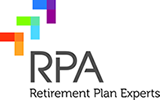What fees and expenses can be paid for by a plan?
In general, fees and expenses associated with the on-going administration of a retirement plan may be paid from plan assets provided they are necessary and reasonable. Certain expenses known as “settlor” expenses, however, cannot be paid for from plan assets.
What is considered reasonable?
In order for an expense to be reasonable, the Department of Labor (DOL) requires all of the following conditions be satisfied:
Does this mean we must select the “lowest cost” service provider?
No. The DOL made this important point in their “401(k) Plan Fee Disclosure Form” by stating the following:
“Selecting a service provider requires that you evaluate and differentiate services offered by competing companies. Cost is one of the criteria, but not the only criterion, for making this evaluation. Other factors of equal or greater importance to consider include the quality and type of services provided, the anticipated performance of competing providers and their investment products and other factors specific to your plan’s needs. The service provider offering the lowest cost services is not necessarily the best choice for your plan.”
What are “settlor” expenses?
These are expenses that must be paid for by the employer because they are associated with the employer’s functions as a settlor of the plan trust.
Is there a simple way to determine if an expense is a settlor expense?
Not exactly. Unfortunately, the DOL has not issued comprehensive guidance on this front, but they have issued some guidance. That said, there are two basic questions that should be considered:
(1) Is the expense necessary for the on-going administration of the plan?
(2) Is the expense discretionary and who does it benefit primarily?
In other words, if the expense is reasonable and relates to the normal operation of the plan, the expense may be paid for by the plan. If, on the other hand, the expense is discretionary and primarily benefits the employer, it would generally be considered a settlor expense.
What are examples of expenses that can be paid for by a plan?
- Annual administration, recordkeeping, compliance testing, and Form 5500 preparation
- Annual plan audit fees (large plan filers)
- Investment, advisory, trustee and custodial fees
- Participant education, enrollment materials and required notices and disclosures
- Required plan amendments and restatements (ex. PPA restatement)
- Fidelity bond
- IRS determination letter filing
- Participant distribution and loan fees
- QDRO review
What are examples of expenses that cannot be paid for by a plan?
- Plan design studies and projections (these primarily benefit the employer and are viewed as a settlor expense by the DOL)
- Initial plan document, discretionary amendments and discretionary restatements (the DOL appears to view these as settlor expenses, even though the plan document is required as a matter of plan qualification)
- Fees associated with the employer’s decision to terminate a plan
- Fees and expenses related to plan corrections made under available IRS and DOL programs
- Fees and expenses related to filing a late Form 5500 under the delinquent filer program
Are the rules different if the fee will be paid from the forfeiture account?
No. Amounts held in a plan forfeiture account are plan assets; the same rules apply.
Note: Some plans use “ERISA budget accounts” or “revenue holding accounts” to accept revenue sharing payments from plan investment vehicles and pay plan expenses. It is our view that these accounts generally should be treated in the same manner as any other plan asset.
How can eligible expenses be charged to plan participants?
Plan-level expenses may be charged (1) pro rata in proportion to participant account balances, (2) as a flat-fee to participant accounts, or (3) some combination of both methods. In addition, certain plan fees (ex. recordkeeping fees in a bundled arrangement) may be paid for by the plan through the plan’s investment vehicles and are reflected as a reduction in investment returns.
Participant-level fees (ex. distribution and loan fees) are typically charged directly to participant accounts.
Does the plan document need to provide that expenses can be paid for from the plan?
Generally, yes, and most plans do allow for eligible expenses to be paid for from plan assets. The plan should also explicitly state that fees may be paid for from the forfeiture account, if desired.
Does it make sense to charge eligible expenses to a plan?
It really depends on the plan and the goals and objectives of the plan sponsor. If the plan pays (whether directly or indirectly through plan investments), overall investment performance is reduced, and this can make a big difference over time. For plans of closely-held businesses, it often makes more sense for the employer to pay the expenses (they are deductible). It is much more common in large plans for the plan participants to bear most (if not all) of the related costs.
If eligible expenses are paid for by the plan, are there any required disclosures?
Yes. There are disclosure rules that apply for both plan service providers and plan participants (in participant-directed plans). These rules, however, are outside the scope of this particular discussion. We will cover the disclosure requirements in more detail in a future update.
Whether a particular fee or expense may be paid for by a plan is a fiduciary decision. Plan fiduciaries are charged to act prudently and in the best interest of plan participants. If a fee is charged improperly, the fiduciary(s) may be held liable so plan sponsors should exercise due care when determining whether it is appropriate for a plan to pay for a given expense. If you have questions on this topic or would like to learn more, please contact us!

